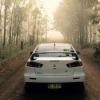Tig Welding Your Car
Announcements
-
Similar Content
-
Latest Posts
-
Thanks guys - I have been overseas for a hectic many weeks , so haven't had time to chase any of these up. Some of the suggestions are for 4.1 ratio, which I already have, and a 3.5 at Lonsdale, which is also too tall. Really looking for 3.9 or even a 3.7 LSD, either with M12 bolts. Will look some more.
-
By Murray_Calavera · Posted
Yeah sounds like the swirl pot isn't being fed from the return line, would be made even worse by the high flow pump. -
This is the R32 one and the inside of the tank should look like this. which has an internal swirl pot, that the return line must empty into. (Interestingly, because the GTR tank is plastic it misses out on the swirl pot.) That is a potential cause for an aftermarket pump hanger to mess things up. Maybe the return is cut short and squirting over the side.
-
By funkymonkey · Posted
Noice. Congrats on the big day too! don’t forget to never eat in the Skyline 🤣






Recommended Posts
Create an account or sign in to comment
You need to be a member in order to leave a comment
Create an account
Sign up for a new account in our community. It's easy!
Register a new accountSign in
Already have an account? Sign in here.
Sign In Now